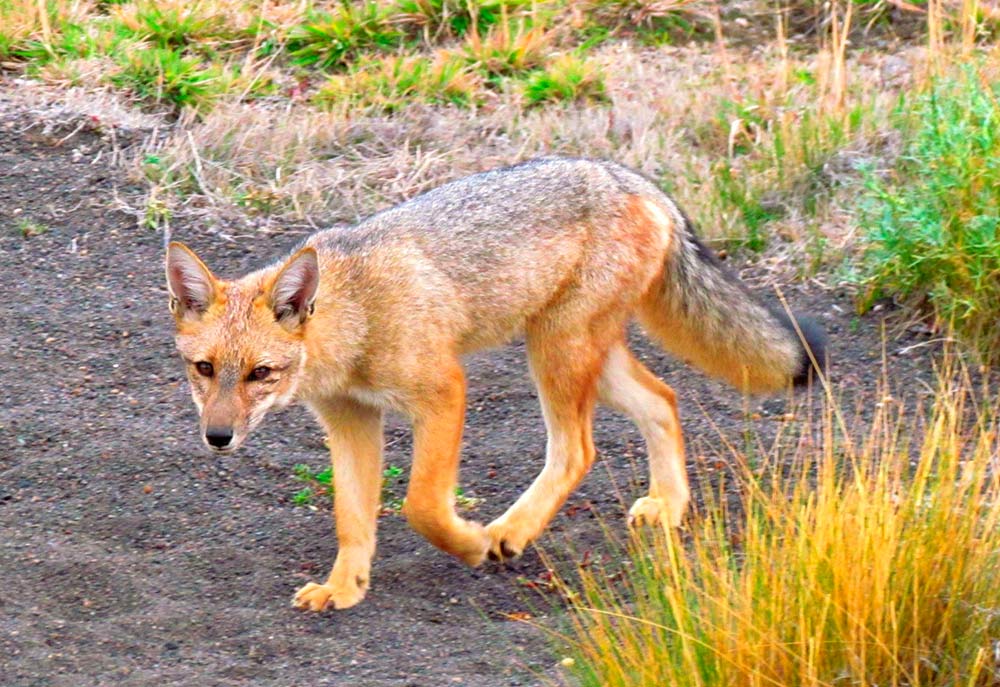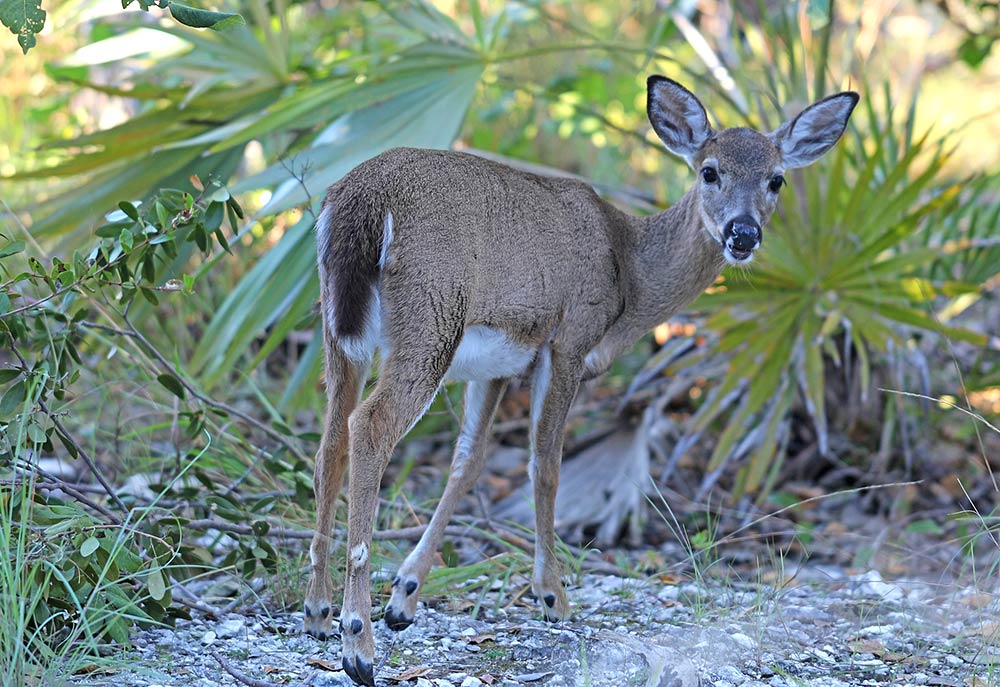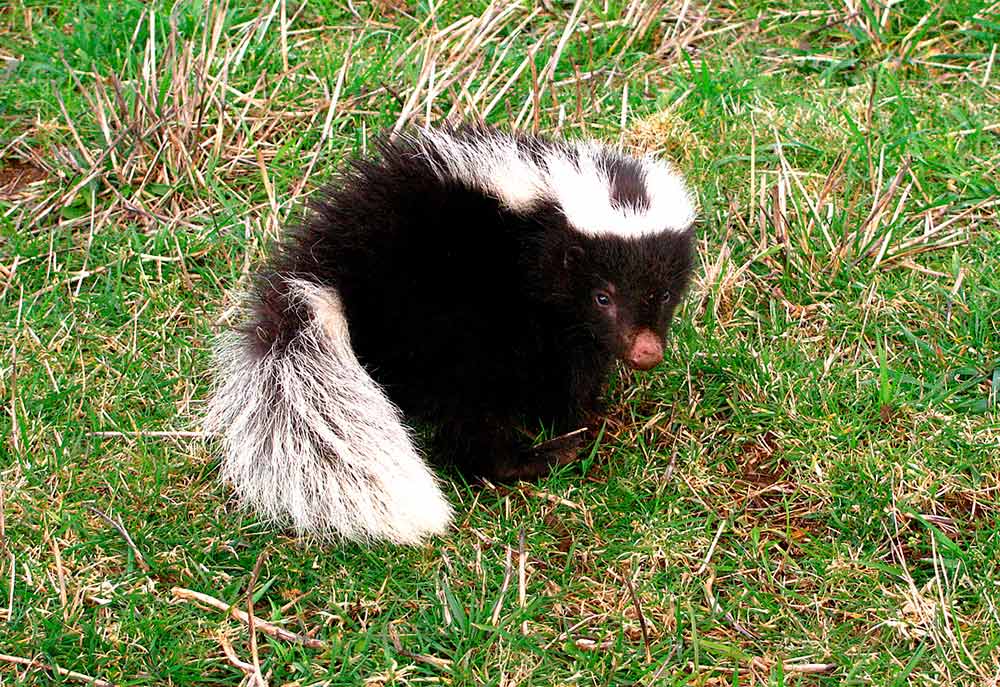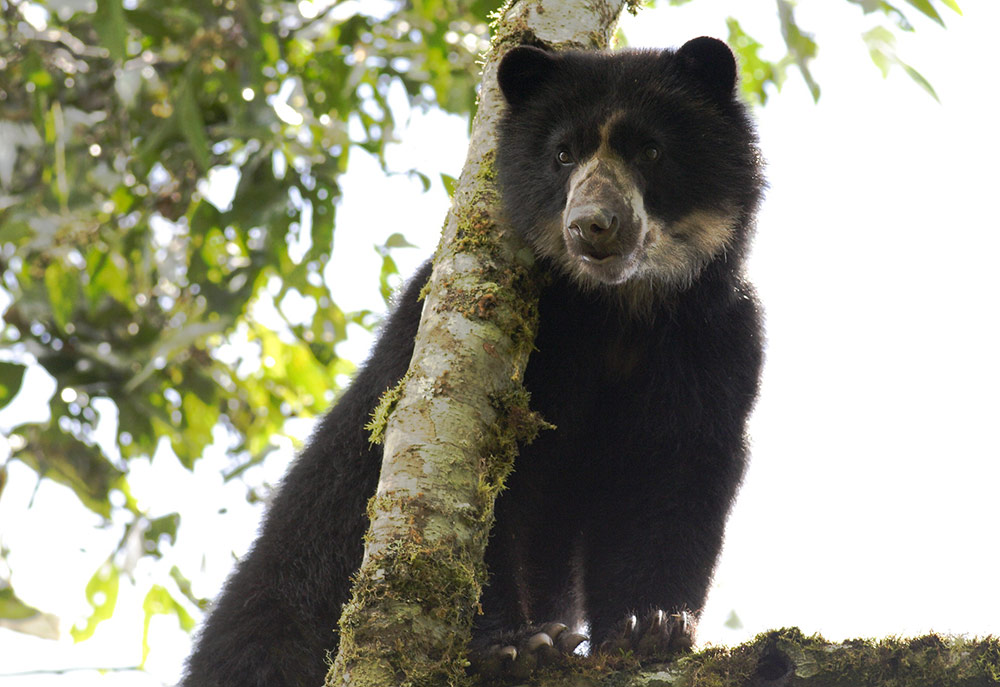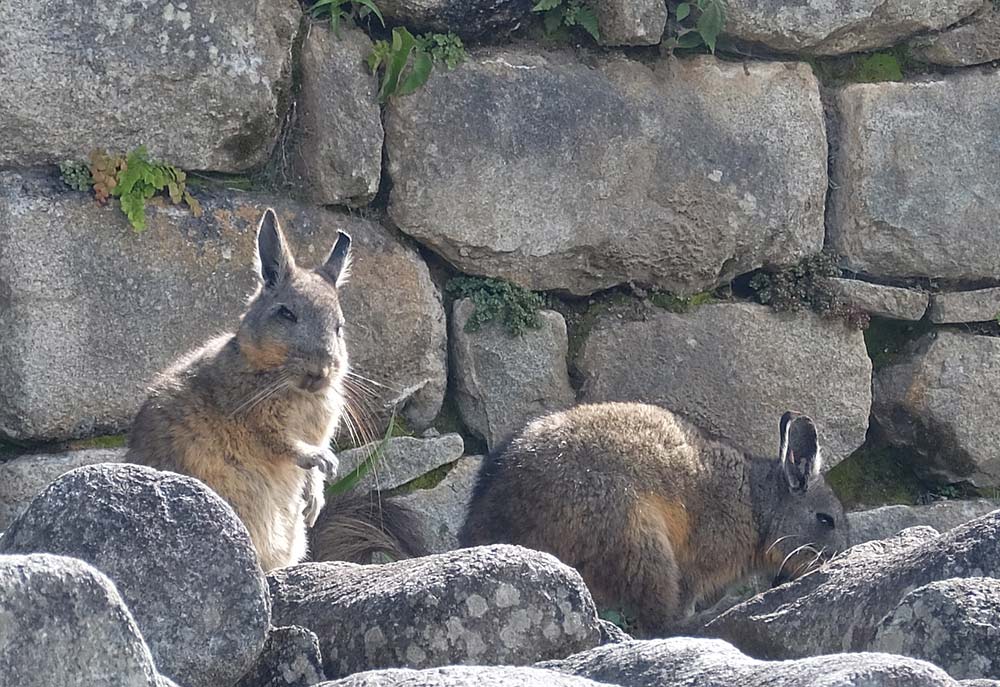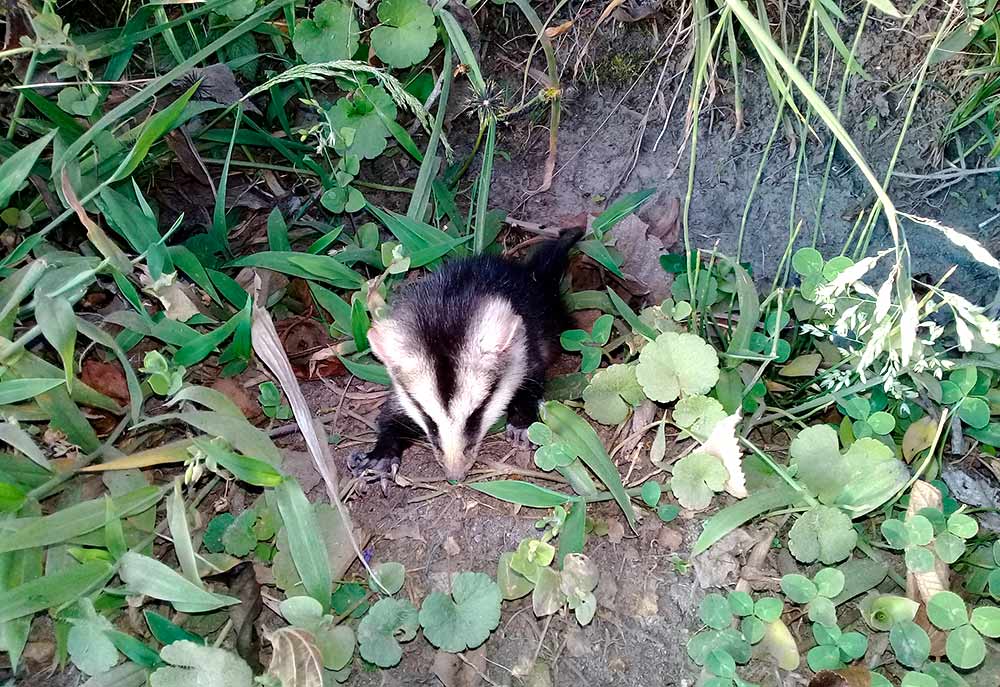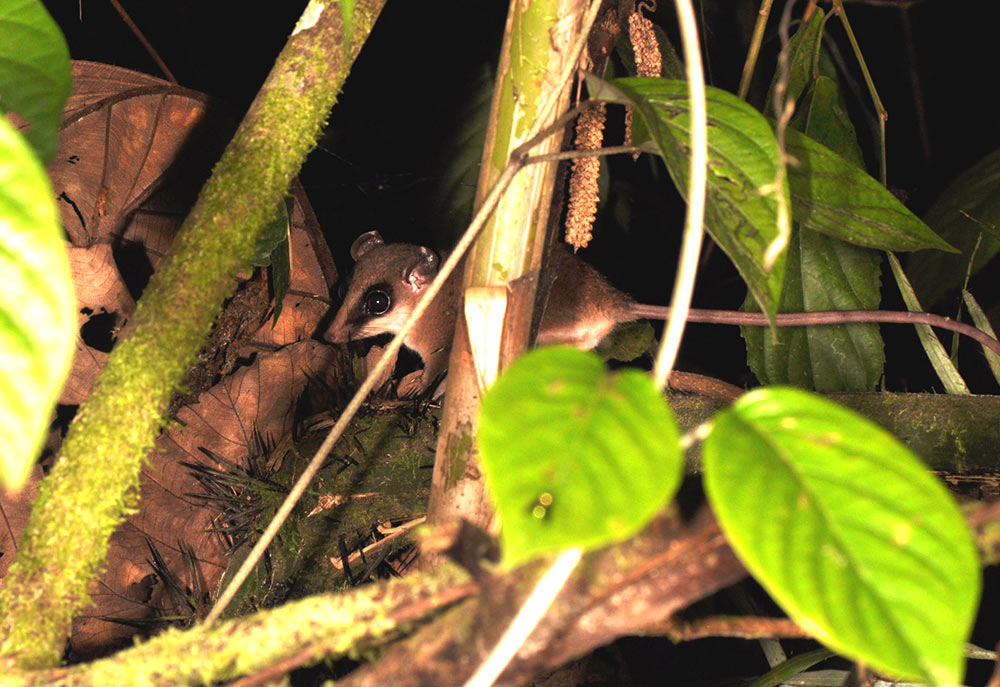What mammals can I see in Machu Picchu?
On the trip to Machu Picchu, in addition to the historic Inca citadel, you can see a great diversity of animals, such as: the spectacled bear, the vizcacha , the Andean deer, the river otter, the skunk, the sachacabra and much more. In total, 70 species of mammals have been recorded, from 20 families and 47 genera. All within the so-called Natural Historic Sanctuary of Machu Picchu.
- What mammals can I see in Machu Picchu?
- The most famous animal species in Machu Picchu
- The most famous bird species in Machu Picchu
- Photo gallery: Mammals at Machu Picchu
- Questions and answers about animal life in Machu Picchu
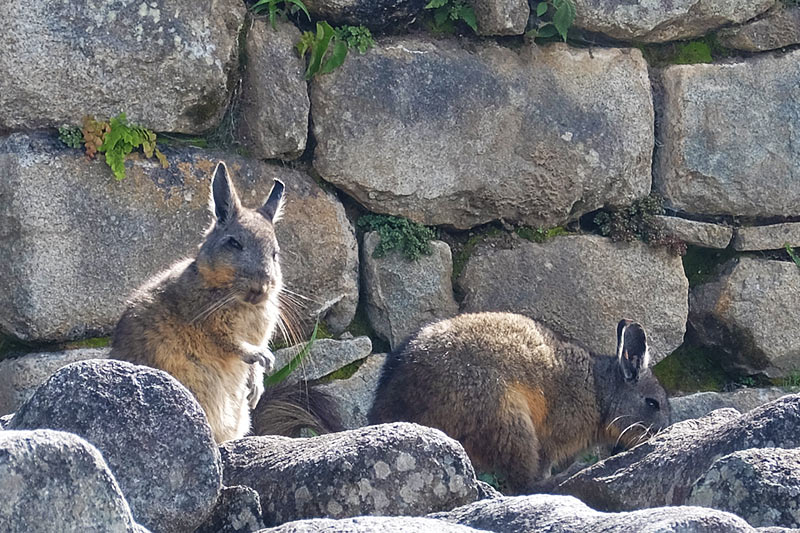
Chinchilla – Machu Picchu
The Historic Sanctuary of Machu Picchu is a natural and historic area protected by the Peruvian State that covers an area of 32,592 hectares. Up to 70 species of mammals have been recorded there. In the archaeological site of Machupicchu, the ancient citadel built by the Incas, you can see vizcachas, Andean deer, llamas and, with luck, the famous spectacled bear. This is without counting the species of birds, flowers and even butterflies.
What mammals can I see in Machu Picchu?
In the Machu Picchu Historic Sanctuary there are a total of 70 species of mammals, from 20 families and 47 different genera, which are shown in the following table:
| No. | Scientific name | Common name |
| 1 | Didelphis pernigra | Andean Eared Opossum |
| 2 | Marmosa sp. 1 | blancas |
| 3 | Marmosa sp. 2 | Marsupial Weasel |
| 4 | Marmosa (Micoureus) regina | Marsupial Weasel |
| 5 | Marmosa (Micoureus) sp. | Queen Marsupial Weasel |
| 6 | Marmosop impavidus | Marsupial Weasel |
| 7 | Inca Lestoros | Inca Marsupial Weasel |
| 8 | Akodon boliviensis | Inca marsupial shrew |
| 9 | Akodon subfuscus | Bolivian Field Mouse |
| 10 | Akodon surdus | Brown Field Mouse |
| 11 | Akodon sp. 1 | Slate-bellied Country Mouse |
| 12 | Akodon sp. 2 | Country Mouse |
| 13 | Akodon torques | Country Mouse |
| 14 | Calomys sorellus | Montane Woodland Field Mouse |
| 15 | Euryoryzomys nitidus | Reddish Evening Mouse |
| 16 | Microryzomys minutus | Shiny Rice Mouse |
| 17 | Neocomys spinosus | Tiny Little Rice Mouse |
| 18 | Nephelomys albigularis | Common Spiny Mouse |
| 19 | Nephelomys keaysi | White-necked Rice Mouse |
| 20 | Oligoryzomys destructor | Yungas Rice Mouse |
| 21 | Oligoryzomys longicaudatus | Destroyer Rice Mouse |
| 22 | Oligoryzomys sp. | Long-tailed Rice Mouse |
| 23 | Phyllotis darwini posticalis | Rice Mouse |
| 24 | Phyllotis osilae | Darwin’s Mouse-Eared |
| 25 | Phyllotis sp.1 | Little-eared Mouse |
| 26 | Phyllotis sp. 2 | Mouse-eared |
| 27 | Rhipidomys leucodactylus | Mouse-eared |
| 28 | Rhipidomys couesi | Cherimoya Rat |
| 29 | Thomasomys aureus | Coues’s climbing rat |
| 30 | Thomasomys gracilis | Golden Wild Mouse |
| 31 | Thomasomys notatus | Delicate Wild Mouse |
| 32 | Thomasomys sp. 1 | Bordered Wild Mouse |
| 33 | Thomasomys sp. 2 | Wild Mouse |
| 34 | Lagidium peruanum | Wild Mouse |
| 35 | Lagidiun viscacia | Peruvian vizcacha |
| 36 | Cavia tschudii | Chilean vizcacha |
| 37 | Dasyprocta kalinowskii | Wild Guinea Pig |
| 38 | Cuniculus taczanowskii | Sihuayro, agouti, añuje |
| 39 | Cuscomys oblativus | Taczanowski bale |
| 40 | Dactylomys peruanus | Machu Picchu tree rat chinchilla |
| 41 | Peropteryx macrotis | Peruvian cone cone |
| 42 | Saccopteryx leptura | Sack-eared Bat |
| 43 | Anoura geoffroyi | List Brown Bat |
| 44 | Anoura sp | Long-faced Tailless Bat |
| 45 | Carollia perspecillata | Long-faced Bat |
| 46 | Desmodus rotundus | Common Fruit-eating Bat |
| 47 | Glossophaga sp | Common Vampire |
| 48 | Micronycteris sp | Long-faced Bat |
| 49 | Phyllostomus hasstatus | Bat-eared Bat |
| 50 | Sturnira erythromus Dark Fruit Bat | Greater Spearblade Bat |
| 51 | Sturnira lilium Yellow Road Bat | Sturnira erythromus Dark Fruit Bat |
| 52 | Sturnira sp. 1 Bat | Sturnira lilium Yellow Road Bat |
| 53 | Sturnira sp. 2 Bat | Sturnira sp. 1 Bat |
| 54 | Mormopterus phrudus Incan free-tailed bat | Sturnira sp. 2 Bat |
| 55 | Tadarida brasiliensis Mastiff Bat | Mormopterus phrudus Incan free-tailed bat |
| 56 | Myotis nigricans Common Blackish Bat | Tadarida brasiliensis Mastiff Bat |
| 57 | Vampirops sp. | Myotis nigricans Common Blackish Bat |
| 58 | Leopardus colocolo Pajonal cat, osccollo, Andean cat | Leopardus colocolo Pajonal cat, osccollo, Andean cat |
| 59 | Puma concolor Puma | Puma concolor Puma |
| 60 | Lycalopex culpaeus Red fox, atoc | Lycalopex culpaeus Red fox, atoc |
| 61 | Tremarctos ornatus Spectacled Bear, ukuku | Tremarctos ornatus Spectacled Bear, ukuku |
| 62 | Lontra longicaudis Little river wolf, mayupuma | Lontra longicaudis Little river wolf, mayupuma |
| 63 | Eira barbara Manco, badger, ucate | Eira barbara Manco, badger, ucate |
| 64 | Mustela frenata Weasel, achoccalla | Mustela frenata Weasel, achoccalla |
| 65 | Conepatus chinga Skunk, añas | Conepatus chinga Skunk, añas |
| 66 | Nasua nasua Ring-tailed Coati, achuni, capiso | Nasua nasua Ring-tailed Coati, achuni, capiso |
| 67 | Hippocamelus antisensis High Andean deer, taruka | Hippocamelus antisensis High Andean deer, taruka |
| 68 | Mazama chunyi Dwarf Deer, tanka taruka, wauco | Mazama chunyi Dwarf Deer, tanka taruka, wauco |
| 69 | Odocoileus virginianus White-tailed deer, luychu | Odocoileus virginianus White-tailed deer, luychu |
| 70 | Pudu mephistophiles Pudu, sachacabra | Pudu mephistophiles Pudu, sachacabra |
The most famous animal species in Machu Picchu
These are the most famous mammal species recorded in the Machu Picchu Historic Sanctuary
- Spectacled Bear – The tremarctos ornatus inhabits the humid forests of Machu Picchu, where it can feed on trees and fruits. Its main hallmark is its gray and white spots around its eyes (similar to glasses). It is also called ‘ukuku’.
- Andean Puma – The puma concolor inhabits much of the American continent. Depending on the region, its name may vary. In Machu Picchu it feeds on rodents, insects and even cattle or camelids. Avoid contact with men, have solitary habits. Its cream and yellow color is its main characteristic.
- Andean deer – The hippocamelus antisensis is a deer that inhabits forests between 1,500 and 3,200 meters above sea level. It reaches a maximum of 80 centimeters. It has fur and short horns. In Machu Picchu it is possible to appreciate them hidden in the humid forests.
- Red Otter – The lontra longicaudis is also called the ‘northeast otter’. It inhabits low mountain rivers, up to 3 thousand meters above sea level. It can reach 2 meters in length. It feeds on fish. In Machu Picchu it is usually seen in the rainy season (from November to March) in the waters of the Vilcanota River.
- Zorrino – The conepatus chinga skunk, also called ‘añas’ inhabits the low and high mountains up to over 4 thousand meters above sea level. Its main feature is its abundant light and dark colored fur. Another distinctive feature is their rectal glands that secrete unpleasant odors as a defense mechanism.
- Vizcacha – The lagidium viscacia, also called mountain vizcacha, is a species of rodent that inhabits high mountains up to 5 thousand meters above sea level. Its main characteristic is its abundant and soft fur, its large ears and its resemblance to a rabbit. It can reach 80 centimeters and its main food is ichu or Andean grass.
The most famous bird species in Machu Picchu
In the Historic Sanctuary of Machu Picchu more than 200 species of birds have been registered (it is estimated that 10% of the entire bird population of Peru), among which are:
- Andean condor – The vultur gryphus is the largest bird species in South America and the second largest flyer in the world –after the albatross-. It can reach 1.42 meters in diameter (3.30 meters with wings spread). It inhabits the Andes Mountains and its diet is carrion. It flies at heights of up to 6 thousand meters above sea level but also descends to the coast to feed.
- The torrent duck – The merganetta armata inhabits the rivers of low mountains at altitudes between 1,500 and 4,500 meters above sea level. It is characterized by its red beak and legs (yellowish in females). In Machu Picchu the waters of the Vilcanota River inhabit, especially in the rainy season (from November to March).
- The Giant Hummingbird – The patagona gigas inhabits is the largest hummingbird species in the world, reaching a diameter of up to 18 centimeters. It inhabits humid and tropical forests between 1,500 and 3,500 meters above sea level. It has white and brown plumage. It is possible to see them in the mountains of the Inca Trail to Machupicchu.
- Cock-of-the-Rocks – The Peruvian rupicola is recognized as the ‘national bird of Peru’ due to its striking red and black plumage on the males. It inhabits the rocky forests of the low mountains. It can reach 32 centimeters. In Machu Picchu it can be seen at specific points, at a prudent distance.
- The real churrete – The cinclodes aricomae inhabits the humid and tropical forests of low mountains, between 3,500 and 4,800 meters above sea level. In Peru it is an endemic bird. It is characterized by its brown plumage with white spots on the eyes. It reaches up to 22 centimeters. It is frequently seen on the Inca Trail to Machu Picchu.
Questions and answers about animal life in Machu Picchu
1. How many mammals are there in Machu Picchu?
In the Historic Sanctuary of Machu Picchu there are up to 70 registered species of mammals.
2. How many species of birds are there in Machu Picchu?
In 1995 alone, more than 400 species of birds inhabiting the Historic Sanctuary of Machu Picchu were recorded. Today it is presumed that there would be many more.
3. What is the most famous mammal in Machu Picchu?
There are many mammals that inhabit the Historic Sanctuary of Machu Picchu. Perhaps the most famous is the spectacled bear tremarctos ornatus (scientific name).
4. Can I see wild animals while visiting Machu Picchu?
In the archaeological site of Machu Picchu it is possible to observe wild animals such as the vizcacha or the Andean deer (in the high mountains). You can also appreciate domestic animals such as the llama.
5. What is the most famous bird species in Machu Picchu?
In the Historic Sanctuary of Machu Picchu there are more than 400 species of birds. Perhaps one of the most famous is the cock of the rocks.
6. Can I see llamas on my visit to Machu Picchu?
Yes, in the archaeological site of Machu Picchu there are around 30 llamas that roam free around the place. Many tourists like to take pictures with these domestic animals.
7. Can I see the cock of the rocks on my visit to Machu Picchu?
In the archaeological site of Machu Picchu there are no suitable forests and rocks for the habitat of the cock of the rocks. However, along the Inca Trail or at the Mándor waterfalls, with luck, you can appreciate these birds.
8. Can I meet pumas in Machu Picchu?
Pumas, although they inhabit the Historic Sanctuary of Machu Picchu, are animals that avoid contact with humans.
By Ticket Machu Picchu – Last updated, August 15, 2024
